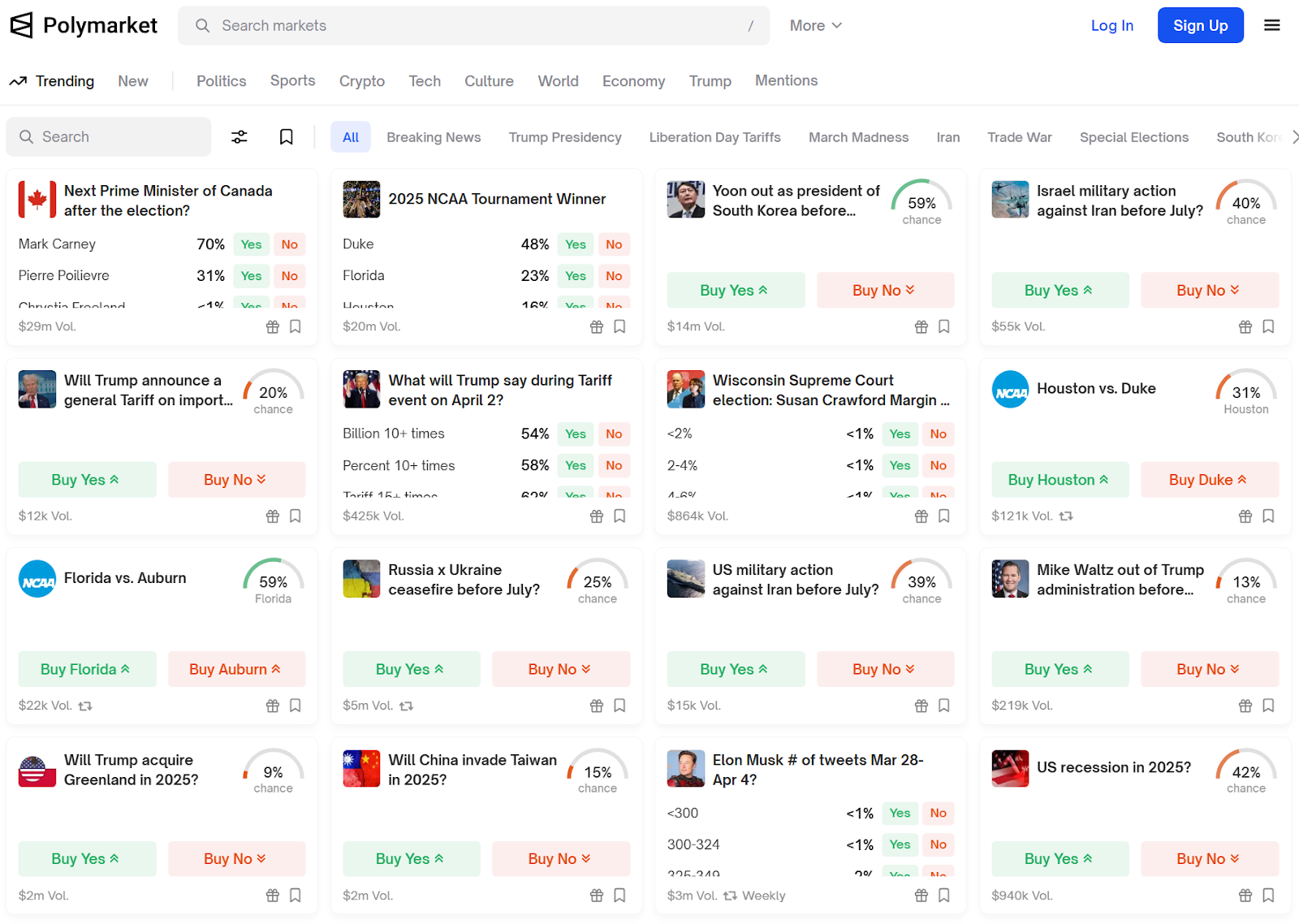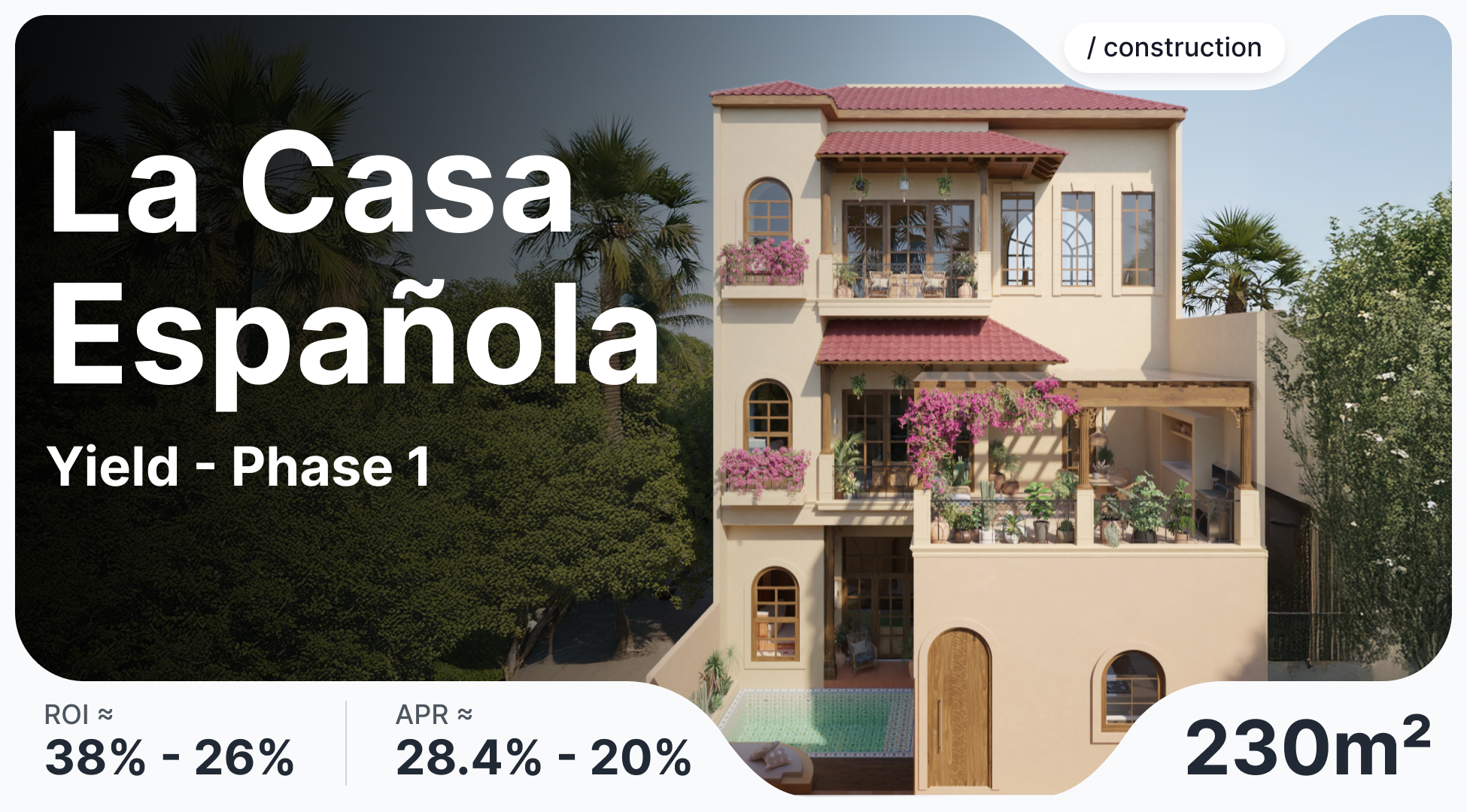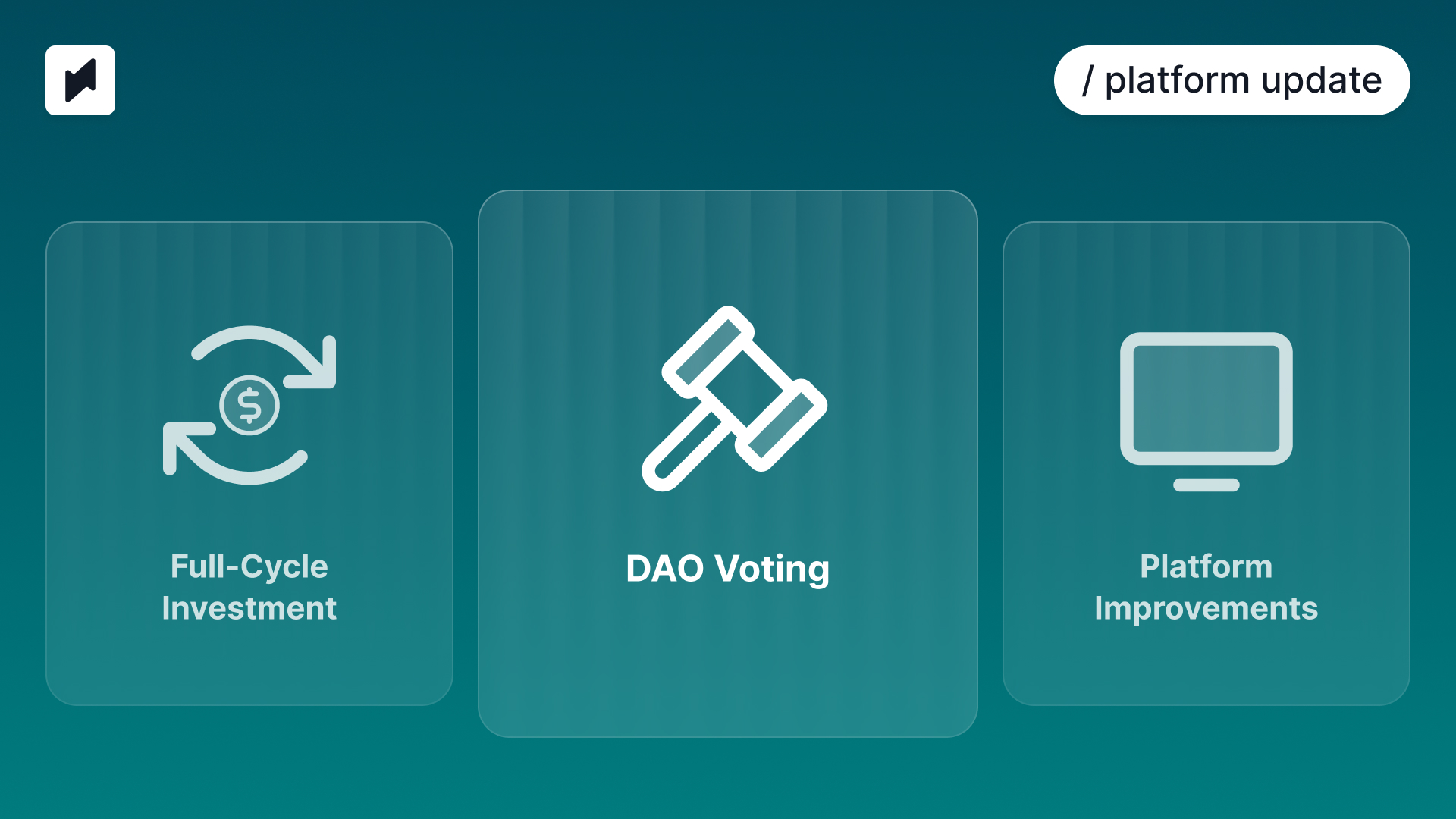RWA Outlook 2025: Asset Tokenization Market to Reach $3.5-10T by 2030
.jpg)
If you've been following the crypto space, you've undoubtedly encountered Real World Assets (RWAs) – traditional financial instruments transformed into digital tokens on blockchain networks. As of early 2025, stablecoins overwhelmingly dominate the RWA landscape, commanding over 97% of the total market capitalization of approximately $250 billion. In this vast ocean of stablecoins, all other tokenized asset categories – government bonds, corporate equities, physical commodities, and real estate properties – collectively amount to a mere $20 billion, rendering them almost invisible by comparison.

However, this distribution is expected to evolve. While stablecoins are likely to remain dominant, innovation within the category has largely plateaued. The market increasingly demands more sophisticated products that are difficult or impractical to create without blockchain technology. Institutional players are prepared for this next phase of evolution. Based on comprehensive analysis and market trends, we project the non-stablecoin RWA market to experience explosive growth – expanding from today's $20 billion to a potential $10 trillion by 2030.
Four Reasons Why RWA Market Is Waiting to Blossom
- Investor awareness of the RWA segment is growing. According to CoinGecko, investor interest in RWAs increased by 2.16%, rising from 6.48% in 2023 to 8.64% by the end of 2024. As a result, RWAs advanced from the 6th to the 3rd most popular market segment, ranking just behind meme coins and artificial intelligence (AI) tokens.
- Stablecoins Are Reaching Their Innovation Limits, Dominated by Established Players. Although stablecoins currently dominate the RWA market, their growth potential is increasingly constrained. Most technological advancements in the stablecoin space have already been realized, and the market is primarily controlled by established players such as USDT and USDC. This dominance leaves little room for new entrants or significant innovation, which in turn, slows the sector’s momentum.
- Tokenization for the Sake of Tokenization No Longer Works. A persistent issue in the RWA market has been tokenization without a clear purpose. Many projects tokenize assets without a viable business model or tangible value proposition, eroding long-term investor confidence. The market is now shifting toward advanced, practical products that leverage blockchain technology to solve real-world problems and deliver measurable value to users.
- Institutional Readiness and Evolving Regulations. Major investment funds are prepared to tokenize a broad range of assets, spurred on by the establishment of more transparent regulatory frameworks. These regulations enhance investor trust by reducing perceived risks and highlighting new opportunities. Supported by legislative clarity, institutional players are poised to lead the next wave of growth in the RWA market.
Crypto Follows the Internet Adoption Curve
A very popular way to illustrate the evolution of crypto space is by overlaying the growth curve of internet users with that of cryptocurrency users. This comparison underscores the “bright future” narrative, showing that crypto adoption is outpacing internet adoption. From 2016 to 2022, the growth rate of crypto users (~89%) surpassed the internet’s growth rate during 1994–2000 (~65%). A straightforward extrapolation suggests an annual growth rate of 12.45% for crypto users over the next two decades.

The actual growth from 2023 to 2024 has been even faster. According to Triple-A, the global number of crypto holders rose by approximately 33%, from ~431 million (5.35% of the global population) to ~560 million (6.8%).
Meanwhile, data from 21.co’s Dune dashboard shows that the number of tokenized RWA holders (excluding stablecoins) surged by ~145%, from 111,000 to 272,000 in just 18 months.
2024: The Year of Mini Bull Run and Institutional Adoption
2024 marked a pivotal year for the crypto market—a year of institutional adoption. In January, the approval of the Bitcoin ETF was a landmark moment, drawing attention from large investors and strengthening confidence in cryptocurrencies. By July, the Ethereum ETF received approval, even earlier than expected. While it didn’t spark the same market euphoria as Bitcoin’s ETF, Ethereum’s ETF approval holds greater long-term significance for asset tokenization, as Ethereum remains the primary platform for creating RWAs.
Beyond institutional acceptance of Bitcoin and Ethereum, 2024 saw significant technological advancements. Chief among them was Ethereum’s Surge update, which drastically reduced transaction fees on Layer 2 networks (e.g., Arbitrum, Base) by hundreds of times. Additionally, 2024 witnessed a quantum leap in user experience design across decentralized applications. Complex operations that once required understanding of gas optimization, slippage calculations, and multiple wallet confirmations were streamlined into intuitive interfaces indistinguishable from traditional financial applications.
This evolution is already producing early candidates for Web3's first true "killer apps." Polymarket, a prediction market platform, saw its monthly active users surge from 50,000 to over 2 million during the 2024 election cycle, demonstrating blockchain applications can achieve mainstream product-market fit when correctly executed.

Perhaps most significantly, 2024 saw a fundamental shift in how traditional finance views blockchain technology—not as a competitor, but as critical infrastructure for their own evolution. BlackRock led this transformation by launching its Ethereum-based BUIDL tokenization fund in March. Meanwhile, JPMorgan processed over $300 billion through its tokenized collateral network, and Goldman Sachs announced plans to tokenize portions of its private credit portfolio. These weren't experimental pilots but strategic business initiatives with dedicated revenue targets and growth projections.
Early 2025: The Great Sorting - When Fundamentals Overtake Speculation
The first quarter of 2025 has delivered a stark reminder that markets rarely follow the narratives we construct for them. While many crypto investors anticipated a triumphant bull run following Trump's election and the institutional adoption milestones of 2024, reality had different plans. Even though Bitcoin remained relatively strong, some altcoins crashed to the lows of 2022 as the administration's tariff policies triggered broader market uncertainty.
This market behavior isn't a failure of the crypto thesis—rather, it represents a necessary and ultimately healthy phase of maturation. What we're witnessing more closely resembles the "Gartner Hype Cycle" pattern that characterizes technological revolutions: inflated expectations followed by disillusionment before reaching sustainable productivity.
While prices may fluctuate, the infrastructure for tokenization continues to strengthen. Major financial institutions aren't pausing their blockchain initiatives based on short-term price action—they're accelerating them. Circle recently reported that 78% of surveyed financial institutions plan to increase their blockchain integration budgets in 2025, despite market uncertainty.
When viewed through this lens, the current market dynamics don't represent a setback for crypto adoption—they represent the perfect conditions for building sustainable real-world assets-based infrastructure, developing proven use cases, and establishing the regulatory frameworks that will support the next phase of exponential growth.
RWA Market Size Forecasts for 2030
Forecasts for the Real World Assets (RWA) market vary significantly, ranging from cautious estimates to highly optimistic predictions. A significant issue with many of these projections is the lack of transparency in their methodologies. In many cases, it’s unclear how analysts arrived at their conclusions. Some estimates appear arbitrary, while others fail to specify whether stablecoins are included in their calculations.

Among the numerous forecasts, the one from 21.co stands out as particularly credible. The company predicts a baseline scenario where the RWA market reaches $3.5 trillion by 2030, with a bullish scenario projecting growth to $10 trillion. For context, 21.co is the parent company of 21Shares, the world’s largest issuer of cryptocurrency exchange-traded products (ETPs).

Adopting the 21.co Forecast as a Benchmark
Why the 21.co Projection Is the Most Reliable:
- Comprehensive On-Chain Analysis
The 21.co report is based on an in-depth on-chain analysis of the current market, supported by their proprietary Dune dashboard. This demonstrates a high level of preparation and a deep understanding of the Real-World Assets (RWA) sector.
- Transparent and Well-Defined Assumptions
The report clearly explains the basis for its projections:
- The baseline scenario assumes that tokenization will cover approximately 10% of regulated fund assets globally.
- The bullish scenario extrapolates the compound annual growth rate (CAGR) of internet users since 2000 and applies it to the growth of cryptocurrency users, ultimately projecting an increase in tokenized asset holders. We’ll delve into further in the next chapter.
For this report, we adopt the 21.co forecast as our benchmark. Under the baseline scenario, we project the RWA market capitalization, excluding stablecoins, to reach $3.5 trillion by 2030. In the bullish scenario, this figure could grow to $10 trillion.
Leaning Toward the Bullish Scenario
Market projections are inherently subject to the winds of change—economic shifts, technological breakthroughs, and political developments can rapidly transform even the most carefully calculated forecasts. For example, the approval of Bitcoin and Ethereum ETFs was widely anticipated and considered inevitable. Conversely, Donald Trump’s victory in the U.S. presidential election had a roughly 50/50 probability, creating a significant potential shift in market expectations.
Based on current trajectories and catalysts, we find compelling evidence to support the bullish scenario of $10 trillion in RWA market capitalization by 2030, excluding stablecoins. If you would like to learn more about these catalysts, check out our RWA 2025 Thesis.
About Binaryx
Binaryx is a real estate tokenization platform that operates under Wyoming’s 2021 law (W.S. SF0038), turning real estate properties into digital tokens. For each property, Binaryx creates a dedicated LLC in Wyoming that issues tokens on the blockchain. When you buy these tokens, you become a co-owner of the LLC that owns the property, with all ownership rights protected by state law.
Want to learn more about Binaryx? Check out these articles:









-min.jpg)
